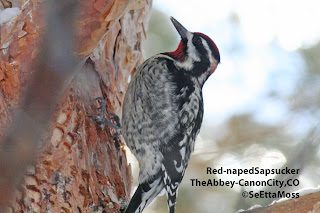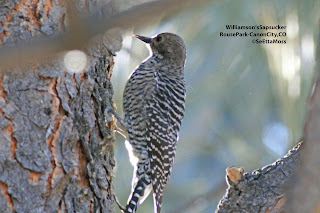Handsome Harris's Sparrows

I found two 1st year Harris's Sparrows yesterday in a field just outside of Florence,CO (a little town not far from where I live). I spotted one perched in a shrub along with some White-crowned Sparrows. After a bit they flew across the road by a ditch and I found there were two Harris's Sparrows. I watched these birds for an hour and was surprised to see them, and the White-crowns, pick up what was presumably some edible seeds frequently. I guess this was a productive feeding location. The two Harris's Sparrows appear to be staying together. After all the White-crowns flew off the Harris's Sparrows remained to continue foraging for awhile before settling in on perches near each other inside the shrub for either a rest or possibly for the night. SeEtta








